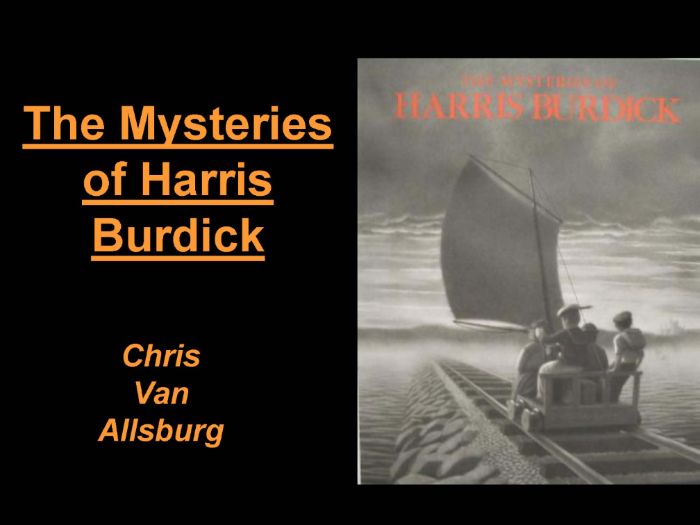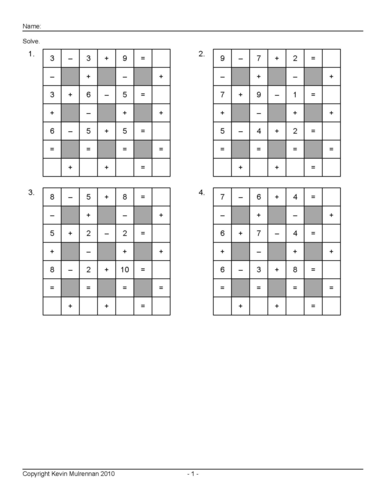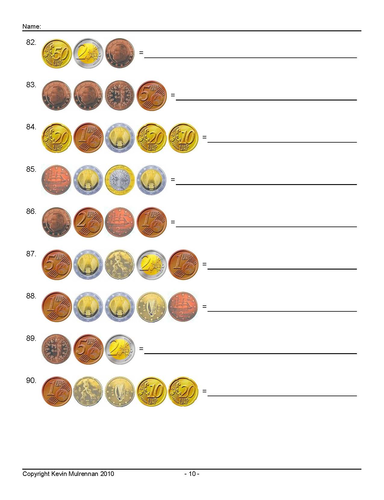421Uploads
152k+Views
49k+Downloads

Teaching Resources 100 worksheets Literacy Wordsearch KS2 English Language
I have designed 100 worksheets on Literacy word searches for primary school children. A wide variety of words used. Plenty of different directions to keep the kids guessing. I have used common English words. Ideal for 11+ preparation. Ideal for Literacy. Ideal for people learning English. Answer sheets are provided for all worksheets.

Simplifying Fractions 100 Worksheets with Answers Maths Mathematics KS2
100 worksheets on simplifying fractions.
Answer sheets provided.
A good time filler or homework.
Bundle

Decoding Bundle 200 Worksheets Verbal Reasoning
A bundle of worksheets.
200 worksheets on decoding,
Plus some great ones on Pythagoras.
I have designed 200 worksheets on decoding numbers for the 11+ non verbal reasoning questions. There are 200 worksheets provided on a cd. Decoding is an important aspect of the 11+ exams. Ideal for parents, pupils and tutors. Answer sheets provided. The Decoding worksheet helps to reinforce spelling and problem solving skills for students. The letters of each word are replaced with other letters or numbers based on a pattern.

Maths Puzzles Across Down Subtraction 100 Puzzles Plus Answers
100 puzzles plus answers.
Great for reinforcing maths.
Across-Downs is a fun activity that reinforces addition and subtraction skills.
The object of the exercise set is to find the answer for each row and column, then use those answers to calculate the final answer in the lower right-hand corner of the puzzle.
This set tests subtraction.

1000 Questions Mathematics Advanced Division KS2 Calculator Use
Please check out my bundles which provide great value.
1000 questions on division.
Great for calculator use.
Answers provided.
Pupils divide a three digit number by a 2 digit one.

Christmas 2 Powerpoints Plus the Feast of the Epiphany
Two great powerpoints and some planning.
Nice powerpoint on Epiphany.
Sample :
Share the new targets with the children and explain that this is a short unit – two double lessons.
Read the story of Jesus’ birth from Matthew’s Gospel – Mt 1: 18-2: 23. Who are the main characters in this story? Concentrate on Mary, Joseph and King Herod.
Talk through the story. God had promised a saviour to free us all from our sins and he sent His only son into the world for us.
Talk about the priorities for any family when a baby is expected. (safety and comfort of the mother) .
Activity One
Come back together and watch scene featuring King Herod. Fear gripped King Herod, his mighty power was threatened. He gathered all the chief priests and scribes to see what they knew – they confirmed that Bethlehem had been foretold by the prophets. Herod launched his plan to locate the baby so that he could destroy him. What was Herod’s mistake? (look for the children to understand that Herod thought that Jesus would be an earthly King with a throne and a crown who was overthrow Herod).
What were Mary and Joseph’s feelings about the birth of the baby? Do you think they were scared? Happy? Relieved?
Children to TTYP and discuss – What does the birth of Jesus mean for us?
Jesus truly God and truly human has come down to Earth.
He brings peace, love and true freedom to those who seek him.
He opens the way to heaven for us.
He has come to save all people.
What does the birth of Jesus teach us?
God seeks those with an open heart to receive him.
If you truly seek God, He will find you.
It’s not money, wealth or knowledge that matters because God seeks the lowly and the humble who are looking for Him.

Christmas Year 6 Planning With Emphasis on Comparison of Gospels
Great planning.
Powerpoints and worksheets plus a week plan.
sample planning :
Ask children to think about their literacy lessons – TTYP and name the important details that are needed in telling a story
(e.g. time, place, characters and events).
Ask children to the recall names of the four main Gospels.
Do they all tell the same story? (Essentially yes but lead children towards idea that they are different versions of the same story).
Use analogy of an incident occurring on the playground – would each child tell the same incident in the same way? No they would tell their version of the same event – some details and word choices would differ.
Talk about today’s WALT and explain that we are going to be looking at some different Gospel accounts of the birth of Jesus Christ. Explain to ch that, in order to achieve their WALT, they will need to be comparing and contrasting everything which they read.
Explain briefly that three out of the four Gospels deal with the birth or Christ; there are many similarities and many differences in the way in which the Gospels record and explain the event.
For today’s lesson we are going to focus on Matthew’s Gospel and Luke’s Gospel.
Discuss possible reasons for the differences in the two accounts. They are coming from two different people; points of view; written at different times but the basic story is the same.
Briefly recap last lesson. Which two Gospels did we look at? Which story were we reading? Did both Gospels tell the story in exactly the same way?
Refer to the list which was made in the plenary last lesson - which other characters were involved in the Christmas story?
Re-read the story of the birth of Jesus in Matthew’s Gospel. Continue to read until Chapter 2 verse 12.
Why did the message of Jesus’ birth first come to shepherds rather than King
Herod?
Why did Herod want to get rid of Jesus?
What words would you use to describe the threat that this baby was to Herod?
What do you think led men to come from the east by the light of a star to find this child?
Herod assumed the King of the Jews sought by the wise men was a conventional king and thus a rival to his throne.
TTYP – what were the names of the three gifts which the wise men brought to the baby Jesus?
Briefly recap the unit so far. Who are the main characters in the Christmas story? Which two Gospel accounts of the birth of Christ have we looked at? What are the similarities and differences between them?
Share the WALT and explain that this lesson will focus on the birth of Christ according to St John’s Gospel.
Explain that in St. John’s Gospel there is no account of the birth of Christ, but there is a poem at the beginning that speaks about him.
Use PPT to explain a prologue.

Back to School Africa Project year 5 Geography History Art Fun Activities
Some great planning for a project on Africa.
Best spread over a half term. A little and often
Maybe you could do an assembly?
Fun activities.
Make a mask
Make a dance
Climate and history and social science covered.
Start off with this: So how much do you really know about Africa?
Begin with a quick question and answer session on Africa to ascertain how much the class already
know, for example: Is Africa a continent or a country? Is it an island? Is the equator near Africa?
What animals do they associate with Africa?
Watch the ‘Challenge the Stereotypes’ video after going through the questions
Class Input – Has anyone been to Africa? Using a map of Africa (visualiser, cut out, atlas?) ask children to come and label the places they have been in Africa and say 3 sentences about the area.
Challenge – How many countries can children label on the map in Africa? Show students a map of Africa. Explain how it is one continent that
has 54 countries. Find the UK on the map, discuss the differences in location, size etc. Explain that they are going to be finding out about Africa and looking into its problems and their solutions over
the next half term.
Think/Pair Share: Discuss where in Africa you might go as a tourist and why? Did they know Egypt was part of Africa?
Explain to the chn that Africa is so rich in its culture that the Earth’s oldest known stone tools (2,400,000 BCE) and first known species: homo erectus (1,900,000 BCE) and humans/homo-sapiens (200,000 BCE) inhabited Africa before any other continent! So genetic evidence suggests we all originate from a species in Africa
This lesson should highlight the minimal amount we know about Africa and encourage chn to find out more about the continent, the coutries and the culture over the coming weeks.

Writing about Flashbacks Dunkirk My Uncle's War
Planning for Literacy Lesson. Pupils will focus on a soldier who was fighting at Dunkirk.
Main character
Jimmy Jones
Medic in WW2. Lovable, friendly and family orientated but also proud and doesn’t talk about his experiences during the war.
Two daughters and several grandchildren. Grandson Bobby will be in the story briefly. Present Scene
A bonfire and fireworks event at the local park. Jimmy is enjoying himself with his family. Noisy, crowded, smells of hotdogs and candyfloss, feeling his Grandson’s hand in his.
Seeing a father piggy back his children, having fun, children squealing in delight at the sparklers in their hands.
Wishing his wife was there to experience this.
Past Scene
The beaches of Dunkirk, there were explosions here too as Luftwaffe bombed the boats.
People being carried here too, carried to me as a medic. How can I help them? I have no supplies, no way of easing their pain.
Soldiers scream in pain and give up on life. Gunfire and shells all around me, the chaotic sound of warfare. A ring of flames. Smell sweat on my bloody uniform. Damp clothes. Lice crawling over my body. Trigger
The sound of wood crackling on the bonfire brings a distant memory and the sound of an exploding firework causes the flashback to begin…
Ending
Bobby ‘Daddy, what’s wrong with Grandpa?’ Jimmy’s son gently on his father’s forearm ‘Dad?’.
‘It’s nothing Son, ‘ he cleared his voice gruffly and tried to come back to the present.

Greek Myths year 5 or Year 6 Literacy Powerpoints and Worksheets
8 powerpoints
12 word documents
Looks at the Greek Myths.
Example :
WALT: box up the labours of Heracles looking at details of setting, obstacles, proof of time, how obstacle was overcome for each event
You need to draw or write brief notes about the setting of each event, about the obstacles that had to be overcome, the words used by the writer to show the passage of time and how the obstacle was overcome. Remember to think about the senses (what could be seen, heard, smelt, touched or felt) to describe the setting.
Event 1: Setting Event 1: Obstacle

Year 5 Autumn 2 Literacy Inc Remembrance Sunday Morpurgo etc
Some planning and powerpoints.
Sample:
(BOOKS)
Go through the first few slides of the ppt. Discuss that we are going to be writing a letter pretending we are a soldier on the front line writing to their family or friend.
Have an A3 letter on the board. What do chn notice straight away?
Discuss the purpose. Why do we have the date? Why do we have the address?
Resources:
Checklist
Letter example – one per child and A3 for WW
(BOOKS)
Quickly recap the lesson from yesterday.
Quick fire feature checklist quiz
Read the passage. Discuss any words that are unfamiliar.
Chn are to work as a class to identify the main events. Can they now order the events? Remind chn that each event is a new paragraph
Can we write linking words for each of the paragraphs? All chn are to have a go and write linking sentences/words in between their events.
Resources:
Read passage from war horse of an event for the chn to write a letter from.

Perusasive Writing Year 6 Spring Term Back to School Planning
Recap with pupils the features of a persuasive advertisement. Recall some of the words / phrases used
Tell pupils today we are going to use our study of persuasive adverts to write our own persuasive leaflet.
Go through the PPT as a class together – You may want to print a copy of some of the slides. Discuss audience and purpose.
Model to children how to begin planning. Use a table on IWB with three main points:
• Why should we buy your product?
• What benefits are there to buying the product?
• What are the consequences of not buying your product?
• Any other useful information.
Remind the children of the key areas where they gain marks: A – S structure and punctuation. B – Text structure and organisation. C – Composition and effect. F – Handwriting.
What were your favourite persuasive devices from the ones we learnt about? Which ones did you find the most persuasive and why? Why is it important to use a range of persuasive devices?
Children now write up the advertisement in their books.
Remember to use PPT as a resource.
You may also like to use the crib sheet as a source of reference for the children.

Lent Ash Wednesday Catholic Church Great Powerpoint
Lovely powerpoint that explains a lot about this important season.
WALT explain the symbols and colours of Easter.
SUCCESS CRITERIA:
I know why certain colours are used at particular times in the Church’s year.
I know that the Church celebrates the Resurrection of Jesus at the Easter Vigil.
I understand some reasons why the Feast of Easter is the most important celebration in the Christian Year.
I can discuss the meaning of some of the Church’s actions and symbols at the Easter Vigil.
Red, symbolising the Holy Spirit, is used on the Day of Pentecost and at other times when the work of the Holy Spirit is emphasized . Saints and Martyrs who dedicated their lives to God all showed the power of the Holy Spirit that was within them; so priests may wear red on certain Saints days. Red will also be worn at a Confirmation service.

1000 questions Equations Single Variable Mathematics KS2 Algebra
1000 questions with answers on Equations.
Single variables.
Pupils have to work out what y equals.

500 Latin Wordsearches Word Searches Cambridge Latin Course
500 word searches on the first book of the Cambridge Latin course.
Answers provided.
The block of text has different shapes. There’s even some colour ones if you are feeling extravagant and can afford the ink!
Great for rainy Friday afternoons.
Bundle

Year 1 and Year 2 Complete Year Planning & Mathematics worksheets Shapes Rounding Puzzles
Mega bundle.
Please see my shop for full details.
Year 1 planning for 3 terms
Year 2 planning for 3 terms
Maths patterns worksheets
Shapes worksheets
Rounding Numbers worksheets
Maths puzzles
All answers provided for worksheets.

Autumn Planning Year 5 Literacy ks2 & Aesop Fables Worksheets
Reclaim your Sundays!
Literacy planning for year 5 for the Autumn term.
Plus 108 great close worksheets on Aesop’s fables.
Planning covers topics such as Famous Authors’ Plans, Myths, Legends and Fables, Recounts.
You get over 40 mb of material.

Maths Puzzle Across Down Addition and Subtraction Puzzle Plus Answers
Great for reinforcing maths.
Across-Downs is a fun activity that reinforces addition and subtraction skills.
The object of the exercise set is to find the answer for each row and column, then use those answers to calculate the final answer in the lower right-hand corner of the puzzle.
This tests addition and subtraction.
If you like this freebie, please visit my shop which has loads of puzzles for sale. Buy the bundles for best value.

Freebie 2 French Wordsearches KS1 KS2 Perfect for Friday Afternoons With Answers
2 French wordseaches with answers.
Each one has 20 basic words to find.
Perfect for rainy Friday afternoons, homeworks etc.
If you like these, please visit my shop where you can purchase 500 of these at a very reasonable price.

Euro Coins Worksheets KS1 KS2 Mathematics Freebie
A worksheet that pupils have to fill in. They have to add up the coins.
If you like it, please visit my shop that has an enhanced similar product.























